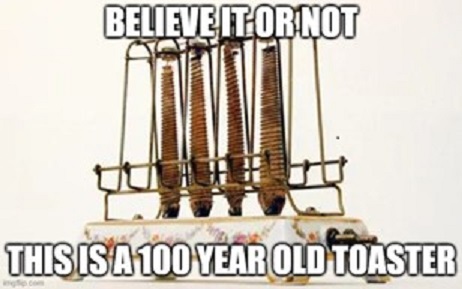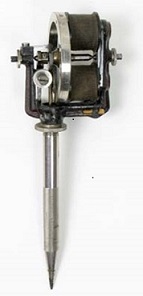
StonebridgeFOCUS | Fortune Favors the Brave/A Case for Crypto
Imagine that someone approaches you with a wild and innovative idea. This idea will surely change life as you know it. Things you once thought were impossible are now probable. This idea will create a safer, more prosperous world. It will improve your standard of living and become indispensable to society. No, this is not the Crypto.com ad claiming that “fortune favors the brave”. And it is not a fad diet. The year is 1882 and this is the pitch for electricity from Thomas Edison’s electric company, Edison Electric Illuminating Company of New York.
Flash forward 140 years and the thought of living without electricity is as foreign as phonebooths and calling movie theaters for showtimes. Despite its ubiquity today, practical application of electricity was not immediately accepted. In fact, for the next 50 years, most Americans continued to light their homes with gas or candles. It was not until the mid-1920s when half of all homes in the U.S. had electric power. An early problem with marketing electricity early on was that the average person did not understand how this would practically improve their daily life.
From Edison’s electric pitch in 1882, it would take 20 years before Americans started to see the possibility, the first electric appliance, a toaster. And it would take another 10 years after that to see the first electric icebox, i.e., a fridge.
In the crypto and digital asset arena, there is plenty of talk about how it will revolutionize society, democratize finance, become a store of value, and upend banking institutions. That may be true. But the biggest gripe I have about cryptocurrency apologists is how they communicate (or fail to communicate) practical application to gain broader acceptance and understanding. How will Bitcoin positively influence the lives of everyday people? When will we see the first blockchain icebox?
There are over 19,500 cryptocurrencies representing over $1.2 Trillion USD1. As a truly mindboggling statistic, there are nearly 5x more cryptocurrencies than US publicly traded stocks (NASDAQ is the largest US exchange listing 3,767 companies as of March 2022)2. For every Amazon, you have 5 Dogecoins. With that many options, it is critically important to know what you own.
Unfortunately, most crypto investors do not really know. All they know is their friends said to buy some dogecoin because they saw someone on TikTok talk about how it made a ka-billion percent in a week.
Then there are crypto apologists who suggest it will create a new societal and financial paradigm. The “Fortune favors the brave” folk. Their proclamations sound eerily similar to Edison in the 1880s. While it is certainly possible that years from now, crypto will seem second nature to us and infiltrate our daily lives to where we stop thinking about it as some fringe, reddit-driven phenomenon, there is some work to be done between discovering electricity and the first toaster.
In the spirit of transparency, I do own some cryptocurrency. Specifically, Ethereum and Bitcoin. My personal thesis is that the underlying technology has some merits for improving an archaic financial and banking system.
Put another way, if the economy is a house, then the finance and banking systems is the electrical and plumbing of the house. So far we have repainted the house, knock down some walls, even redo the kitchen, but it is unlikely that we will touch the wiring or pipes. Replacing these older systems will take time and will certainly have some trial and error. This is why money moves slowly.
The road to innovation is littered with failures. One of Edison’s electrical abominations was the electric pen. The half pen/half fishing reel disaster was designed to make multiple copies of handwritten documents quicker by punching holes through multiple sheets of paper, which could then be used as stencils for printing. This, unsurprisingly, did not take off.
Over the past week, the crypto world has seen a similar kind of failure firsthand with the collapse of TerraUSD and Terra Luna. In short, TerraUSD was designed as a stablecoin to maintain a 1-to-1 value (or “peg”) with the US dollar. A corollary is to money market funds, which are also designed to maintain a 1-to-1 value with the dollar. Most money market funds, and some stablecoins, maintain that delicate balance by having some collateral behind it. Usually in the form of US government debt. Terra, on the other hand, used an algorithm to balance the supply and demand. The Terra stories seem to be coming to a close as TerraUSD dropped from $1 to less than 10 cents in about two weeks and Terra Luna became effectively worthless.
Like most things, there is more to these stories. But the point is that we will certainly see more electric pens and Terra failures as we figure out how crypto will play a meaningful role in our lives, or at least until we see it become indispensable.

At the time of this writing, most cryptocurrencies are selling off like the rest of the stock market. Bitcoin is down 38%. Ethereum down 48%. Cardano down 62%. Crypto is not a safe-haven, and there is scant evidence that it serves to hedge inflation, the dollar, or acts as digital gold. And it certainly is not an uncorrelated asset class to reduce volatility. A more appropriate way to look at crypto is as venture, or emerging technology.
Early last year, we provided our perspective on cryptocurrencies, which has not meaningfully changed. It is a space fraught with risk, fraud, but also opportunity. It is an area that should be navigated with the assistance of professionals who can help sort out and isolate the legitimate opportunities.
At Stonebridge, we are here to help navigate those waters and provide solutions to capture those opportunities. If you would like to learn more, please feel free to reach out to the Stonebridge team.
Thank you for your continued trust and confidence.
Tyler Martin, CFP®, CPWA®
1 Coinmarketcap.com
2 Statista.com

